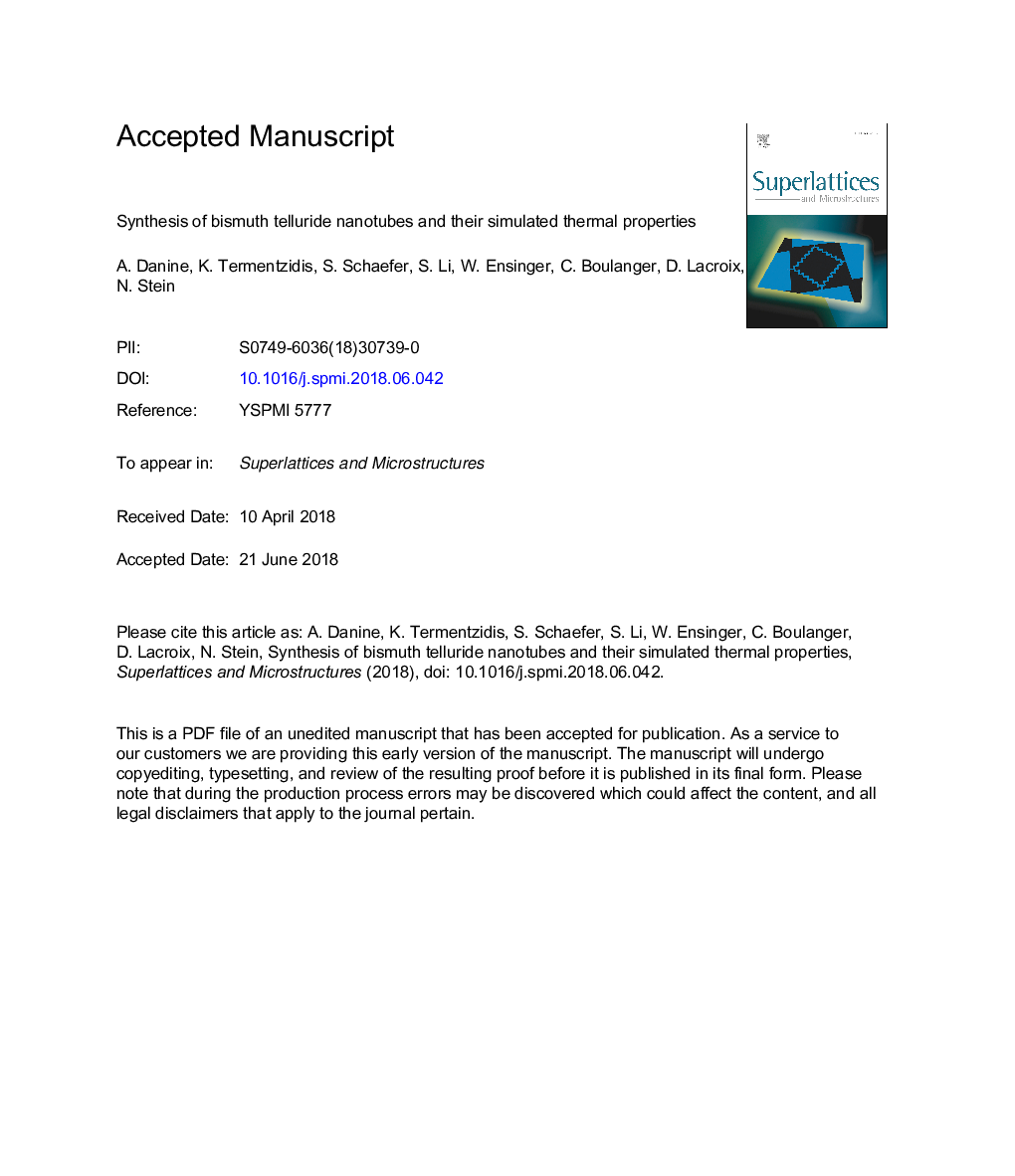| Article ID | Journal | Published Year | Pages | File Type |
|---|---|---|---|---|
| 10155751 | Superlattices and Microstructures | 2018 | 24 Pages |
Abstract
Bi2Te3 nanotubes have been fabricated by a two-step process at room temperature in aqueous mediums. Nanocrystalline nickel nanotubes were synthesized by electroless deposition in ion track template membranes and they were employed as sacrificial materials to order to transform it into nanotubes of bismuth telluride by Galvanic Displacement Reaction. Bright field imaging in a transmission electron microscopy (TEM) shows outstanding well-defined bismuth telluride nanotubes with outer diameter of 634â¯Â±â¯16â¯nm and wall thickness of 52â¯Â±â¯2â¯nm. Energy dispersive x-ray spectroscopy (EDS) shows a chemical composition of Bi1.6Te3.4 whereas Scanning Transmission Electron Microscopy (STEM) indicates that Bi and Te appear homogenously distributed across the nanotubes. Additionally, the thermal conductivity of the amorphous nanotubes has been simulated with means of Molecular Dynamics (MD) and they show an ultralow thermal conductivity of 0.316â¯Wâ¯mâ1.Kâ1. Therefore, these structures might be interesting candidates for thermoelectric materials.
Keywords
Related Topics
Physical Sciences and Engineering
Materials Science
Electronic, Optical and Magnetic Materials
Authors
A. Danine, K. Termentzidis, S. Schaefer, S. Li, W. Ensinger, C. Boulanger, D. Lacroix, N. Stein,
